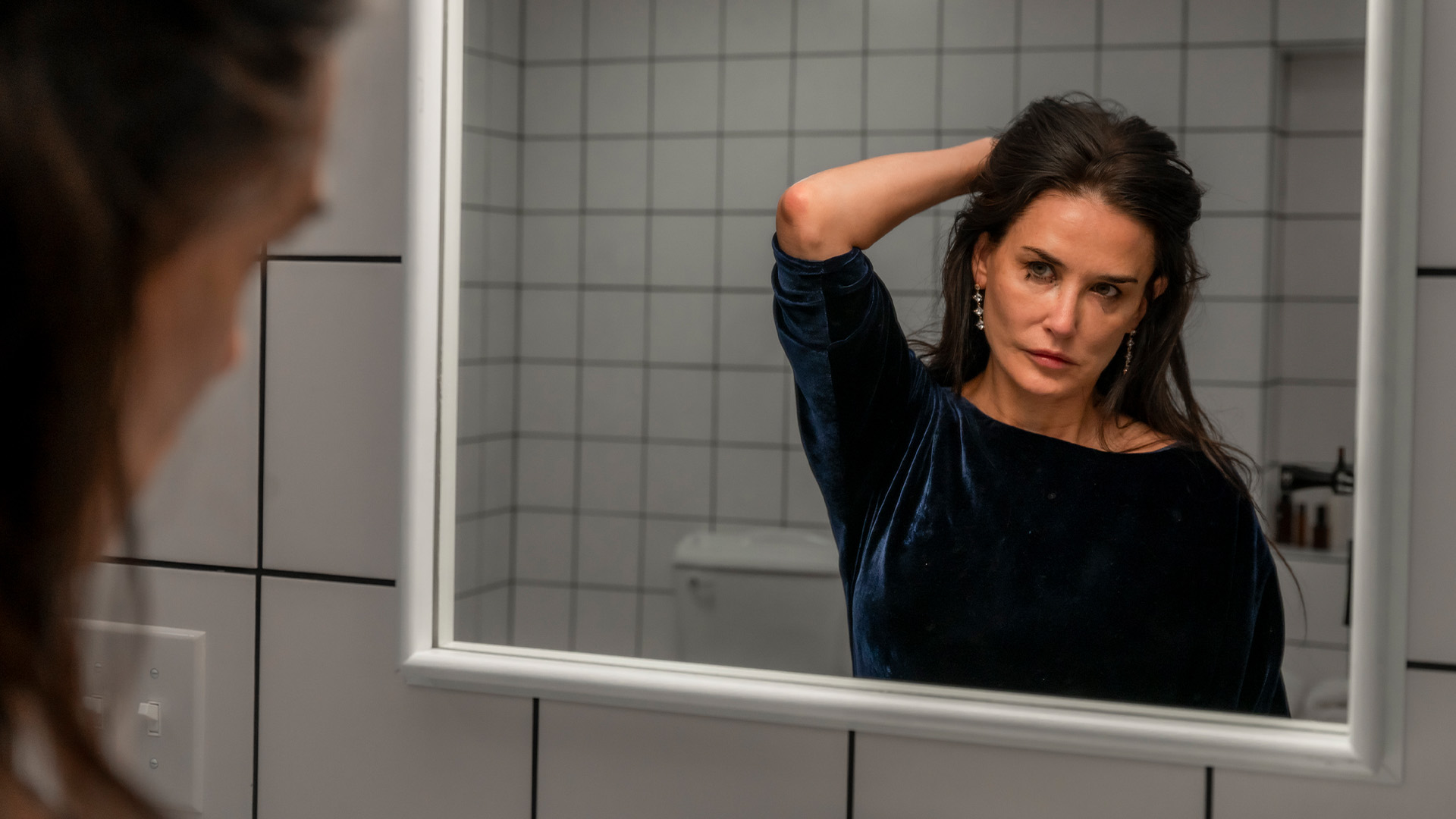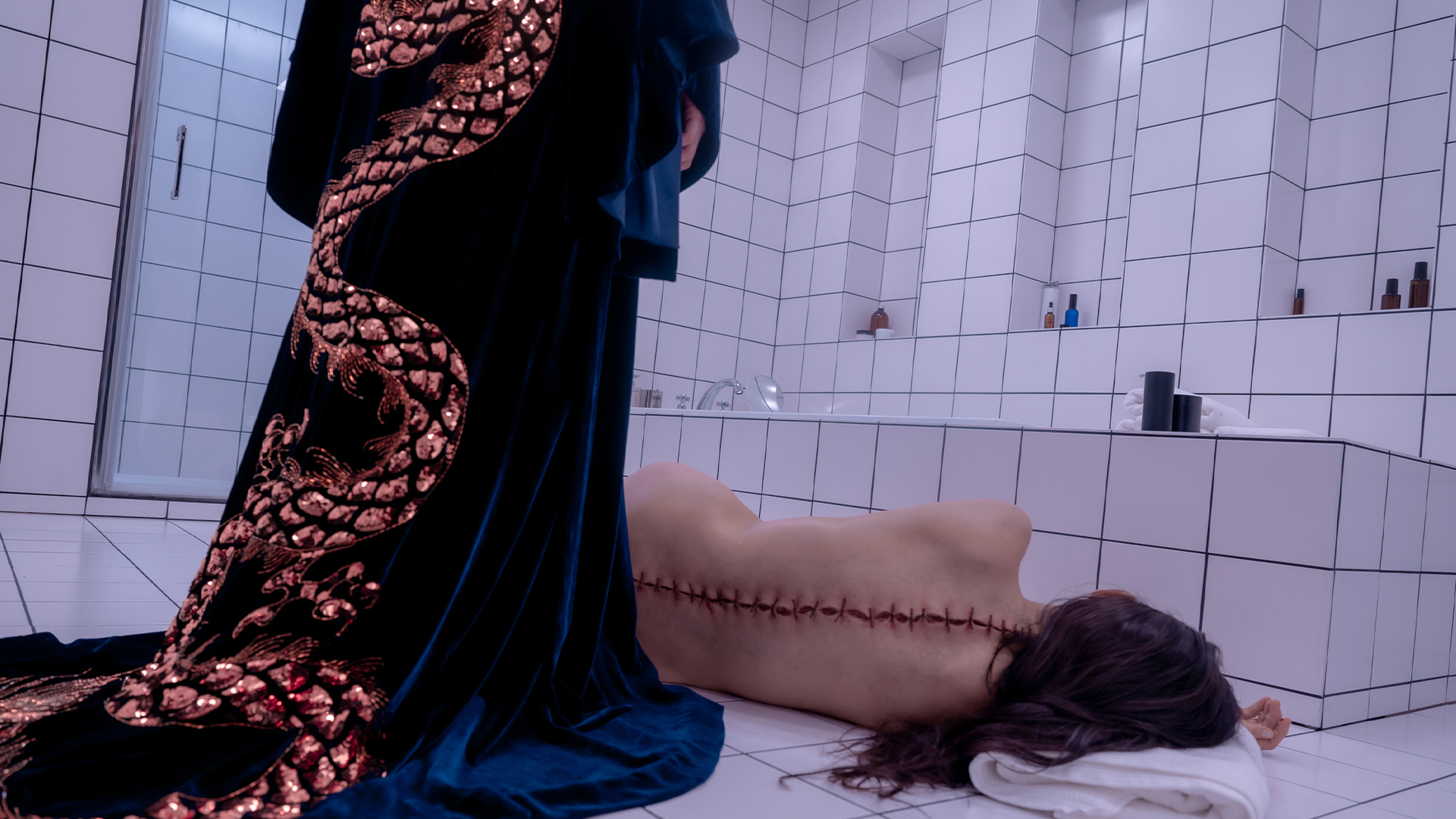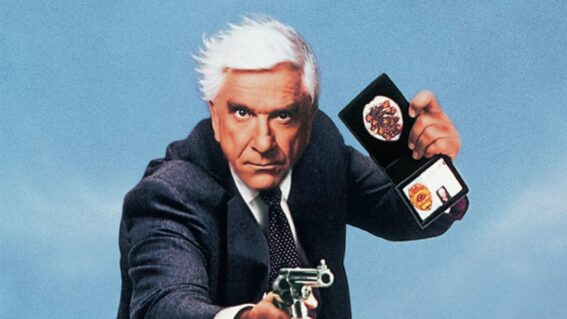Will The Substance become a cult classic?

Coralie Fargeat’s body horror The Substance is one of the year’s most talked about movies, starring Demi Moore as a faded celebrity determined to drink from the fountain of youth. Luke Buckmaster unpacks a spectacularly revolting production in which “everything is amplified, accelerated, screamed and smashed.”
Not many of us have been sprayed with blood from a high powered hose then pelted with body organs sourced from recently deceased victims who died horrible deaths—but The Substance can be considered a reasonable approximation. This beserkley audacious horror movie about female beauty standards is wild, wild, wild, to the point where traditional turns of phrase communicating extreme excessiveness no longer cut it (thus the opening sentence of this article).
To say French director Coralie Fargeat doubles down on outré spectacle, or cranks the dial to 11, or goes all in, is nowhere near enough to convey just how committed this film is to making one hell of a noise.
What’s The Substance about?
Demi Moore stars as Elisabeth Sparkle, an over-the-hill actor who was once the toast of town, even snagging a spot on Hollywood’s Walk of Fame. But her career has bottomed out and she’s now dancing on peripheries of the zeitgeist, quite literally, as the host of a morning aerobics workout program. But that too must end, the producers—led by Dennis Quaid’s slobbering misogynist Harvey—inevitably deciding that a pretty young thing must replace her. Which turns out to be…a version of Sparkle herself.
The Substance has several obvious cinematic influences, from overarching story concepts (John Frankenheimer’s sci-fi Seconds) to individual scenes (the fluid-spraying ending of Carrie) and broadly comparable protagonists (Norma Desmond in Sunset Boulevard). But narratively it’s perhaps most indebted to Robert Louis Stevenson’s novella Strange Case of Dr Jekyll and Mr Hyde, Sparkle enlisting the services of a mysterious company that provides her a serum that, once injected, creates another, “perfect” version of herself, “perfect” being a synonym for “young and hot.”
The deal is that the new version of herself—this is Margaret Qualley’s Sue—gets to live it up while Elisabeth must spend a week unconscious, being kept alive with various injections. Then the pair swap. Sparkle is told by she must “respect the balance” and never change that arrangement. But of course, experiencing youth, beauty and Hyde-like out-of-body experience is addictive, so Sparkle overstays her time in Sue’s body. Things go terribly wrong, ultimately erupting in Grand Guignol spectacle that has to be seen to be believed.
Why it’s hugely divisive
I think this film will come to be regarded as a modern classic—a status that some productions accrue almost instantly. Virtually as soon as Jordan Peele’s feature debut Get Out arrived, for instance, it’d seared itself onto the zeitgeist like a branding iron, talked up by critics and a water cooler sensation with audiences. But The Substance is much more divisive—something its certified fresh score on Rotten Tomatoes does not reflect (the BBC rightly described it as “one of the most divisive films this year”). Like we saw recently in the response to Darron Arronofsky’s The Whale, its critics give the impression of dribbling bile from their mouths while they pound the keyboard.

One common complaint is that the film lacks subtlety. After identifying the ferociousness of the patriarchy as a key theme, Slate’s Dana Stevens wrote: “After two hours and 20 minutes of flamboyantly repulsive variations on this well-worn theme, even the strongest-stomached and most feminist of viewers could be excused for muttering, We get it already.”
I like The Substance a lot, but she’s not wrong. It’s subtle as a sledgehammer to the face, Fargeat assaulting audiences with the same messages again and again. These are noisy times, she seems to be saying, and to be heard you must be loud. This didn’t bother me, partly everything in the film is amplified, accelerated, screamed and smashed. And partly because Fargeat’s gimlet-eyed focus on a small number of core themes (another is a cautionary message about the old “eternal youth” chestnut) in a strange way keeps the film grounded, gives it a center.
By god it’s visually interesting
The film’s nerve-shattering unsubtlety might’ve been more an issue for me had it not been consistently, from the outset, visually interesting. One example of this is an early, brilliantly executed unbroken shot looking down on Sparkle’s Hollywood star. We see the star placed and cemented in the ground, followed by a series of events capturing and compressing the flow of time: people flock to it; birds walk over it; various weather conditions i.e. rain and snow come and go; the star cracks. Finally, a man drops a burger on the ground, smearing sauce on it.

This is a great example of visual storytelling. Anybody, at any point in cinema history, could watch this scene and instantly get it, understanding exactly what the director is saying: that Sparkle’s fortunes, and society’s attitudes towards her, have dramatically changed.
Going forward, the film never stops being aesthetically inventive, with wacky framing, compositions dripping with (yes: unsubtle) subtextual meaning, plus all sorts of icky body horror embellishments. And it’d be remiss of me not to mention Demi Moore, delivering her most high-impact, utterly wall-rattling performance to date, somehow piercing through all the noise and thunder and making us think, feel and hurt.
Will The Substance become a cult classic, remembered and returned to for eons? I think so, but time will tell. One factor against it is the film’s elephantine runtime, which reflects its spirit of excess but reduces rewatchability; a tight 90 minutes could’ve made it soar. On the other hand, there’s something to be said about an artist so wildly audacious they don’t know when to stop, and don’t seem to care if you keep watching. This movie is madness.
















